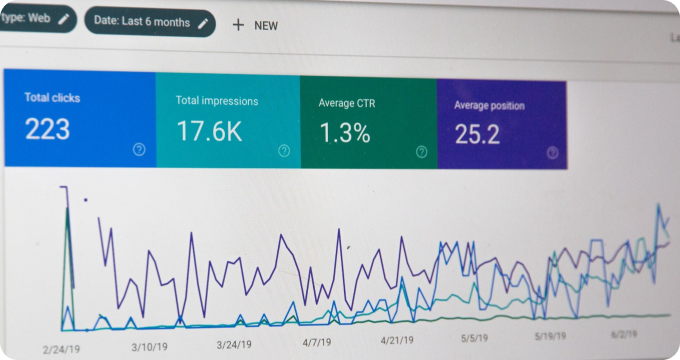Ask These Questions to a Learning Management System Provider to Choose the Right One for Your Needs
- December 09, 2023
- 3 minutes
In the contemporary landscape of knowledge dissemination, Learning Management Systems (LMS) stand at the forefront, serving as the nexus of academia and technology. This indispensable tool has transformed the way we comprehend and communicate knowledge, framing it in an accessible, convenient, and efficient manner. However, with the plethora of LMS options available on the market, it can be an arduous task to select the one that fits perfectly with your unique needs.
Trace back to the seminal work of Thomas Kuhn, who in his book "The Structure of Scientific Revolutions", posited about the paradigmatic shift in science. Similarly, the inception of LMS marked a paradigm shift in the educational sphere, and the selection process is more than just ticking boxes against a checklist of features. It's a strategic decision that demands comprehensive understanding and thoughtful deliberation.
To help you navigate through this, we have collated a list of questions that you should pose to an LMS provider, essentially serving as your version of the Socratic method to unearth the underlying utility and potential of an LMS.
- What is the System's Core Architecture?
The infrastructure of an LMS is much like the blueprint of a building. Just as an architectural plan determines the strength, usability, and purpose of a building, the system's core architecture determines its flexibility, scalability, and functionality.
From monolithic architectures to microservices, each framework has its pros and cons. While monolithic architectures ensure operational simplicity, they might pose challenges in scaling. On the other hand, microservices offer better scalability but are complex to manage. Hence, the core architecture should align with your organization's current needs and future aspirations.
- How Intuitive is the User Interface (UI)?
The UI of an LMS is akin to the cognitive ergonomics in human-computer interaction - a concept developed by Donald Norman in his book "The Design of Everyday Things". The principle asserts that the design of a device should be intuitive and promote easy usability. If an LMS is robust but has a complex interface, its utility diminishes due to poor user adoption. The UI must be intuitive and user-centric, facilitating seamless navigation and enhanced user experience.
- What are the Collaboration and Interactive Learning Tools?
Collaboration tools and interactive learning are to an LMS what the Nash equilibrium is to game theory. Just as John Nash expounded that optimum results come from everyone in the group doing what's best for themselves and the group, effective learning happens when students not only absorb content individually but also engage in collaborative learning. Thus, ensure the LMS promotes engagement through discussion forums, group assignments, and live chats.
- How Robust are the Reporting and Analytical Tools?
In the context of LMS, data is the equivalent of the Heisenberg uncertainty principle in quantum physics, where the more precisely one property is measured, the less precisely the other can be. The more in-depth the LMS data, the better the understanding of user engagement, course effectiveness, and learner progress. Ensure that the LMS provides detailed reports, data visualizations, and the ability to track various metrics.
- Is the System Compliant with Standards (SCORM, AICC, xAPI)?
Compliance standards are to LMS what standard units are to physical sciences. They create a common language that ensures different systems can interact seamlessly. SCORM (Shareable Content Object Reference Model), AICC (Aviation Industry CBT Committee), and xAPI (Experience API) are the prevailing e-learning standards. Compliance with these standards ensures that your digital learning resources are interoperable, reusable, and trackable across platforms.
- What Support and Training Services are provided?
Even the most advanced and user-friendly LMS requires a learning curve. Therefore, it is crucial to enquire about the vendor's support and training services. The vendor should be able to provide comprehensive support during the implementation phase and beyond.
Remember, the objective is not to procure an LMS that has the most features, but rather one that aligns with your organization's learning goals and user needs. The choice of an LMS should not be a tale told by an idiot, full of sound and fury, signifying nothing, but a well-considered decision that enhances learning outcomes and contributes to your organizational mission.
Learn More
Unleash the power of knowledge and elevate your learning experience by diving deeper into our insightful blog posts about learning management systems. For an unbiased, comprehensive view, the reader is encouraged to explore our meticulously curated rankings of the Best Learning Management Systems.
Popular Posts
-
 8 Compelling Reasons Why Your Organization Needs a Learning Management System
8 Compelling Reasons Why Your Organization Needs a Learning Management System
-
 Debunking the Top 10 Myths Surrounding Learning Management Systems
Debunking the Top 10 Myths Surrounding Learning Management Systems
-
 Ask These Questions to a Learning Management System Provider to Choose the Right One for Your Needs
Ask These Questions to a Learning Management System Provider to Choose the Right One for Your Needs
-
 4 Essential Questions to Ask Your Learning Management System Provider
4 Essential Questions to Ask Your Learning Management System Provider
-
 6 Things I Wish I'd Known About Learning Management Systems Before Implementing One
6 Things I Wish I'd Known About Learning Management Systems Before Implementing One






